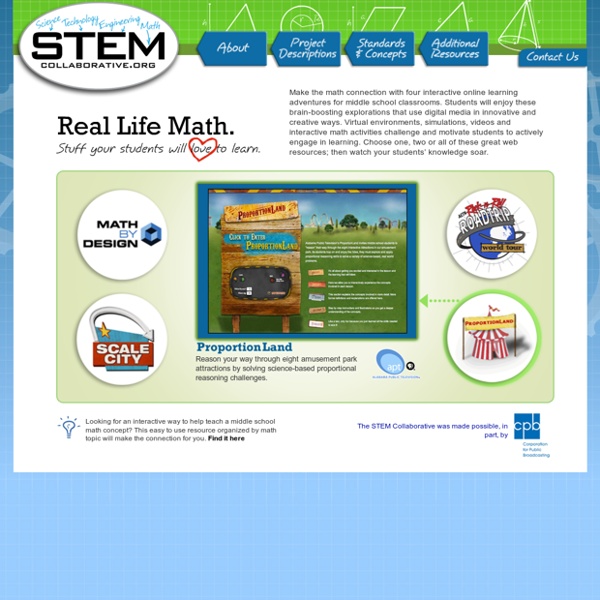



Multiplication Rock Schoolhouse Rock was a series of three-minute Saturday morning lessons on math, grammar, civics, and science that ran from 1973-1985 on ABC television. Undoubtedly the most famous installment was "Conjunction Junction," but "Three is Magic" was the very first one, debuting in 1973. The theory was that putting multiplication facts to music would make them easier for kids to learn. Sesame Street was itself just a year old at the time, and the concept of short, repeated educational segments was gaining steam. ABC ran the segments five or six times each Saturday morning between their regular shows. Segments were produced for the multiplication tables for all the numbers from 0 to 12, with the exception of 1 and 10 (presumably, no music was necessary for these two!). To hear the music and read the lyrics, click on a number below.
Math Wars: The Debate Between Higher-Order Vs. Rote Learning - Getting Smart by Marie Bjerede - edreform, lrnchat, mathchat Recently, EdSurge published a fabulous post highlighting the escalating rhetoric that the Khan Academy has inspired among math educators and edupreneurs. Sal Khan’s success has brought to the forefront a discussion that has been ongoing in academic and education circles for some time. This debate parallels the one about Common Core Math Standards exemplified by the Wurman and Wilson article referenced in a recent Getting Smart post. At the heart of the debates is the tension between teaching students to accurately perform math computation and procedures versus teaching students higher-order mathematics skills. Versions of this debate have persisted through numerous iterations of math reform. And yet, there seems to be general agreement that we want kids to understand the math as well as be able to perform it. But then, that same research points out that the chunking that happens also relies on deliberate practice – about 10 years of it to become an expert in anything.
Going Paperless: The Digital Binder I wanted to share a bit of what I’m doing in my various classrooms as a means to go paperless. To me, the need to go paperless is about two things: 1. The reams of paper that are used in any class, in particular a writing class, are simply grotesque. It’s about the environment, sure, but it’s also about budget. Now, I’m not on a crusade to save the district money or anything, although I’m happy to do so; I am, however, on a crusade not to be dependent on anyone ordering reams of paper because that is a ball that constantly gets dropped. 2. So it seemed obvious that the most natural next step for my classes was to see if we could go as paperless as possible in as meaningful a way as possible. First thing I should tell you is that we have a class set of iPads and a smattering of Chromebooks in my classroom. I should note that these classes are designated as Honors; however, I will be taking this model to my mainstream classes as well. Here’s how we are progressing: 1. 2. 3. 4. 5. 6.